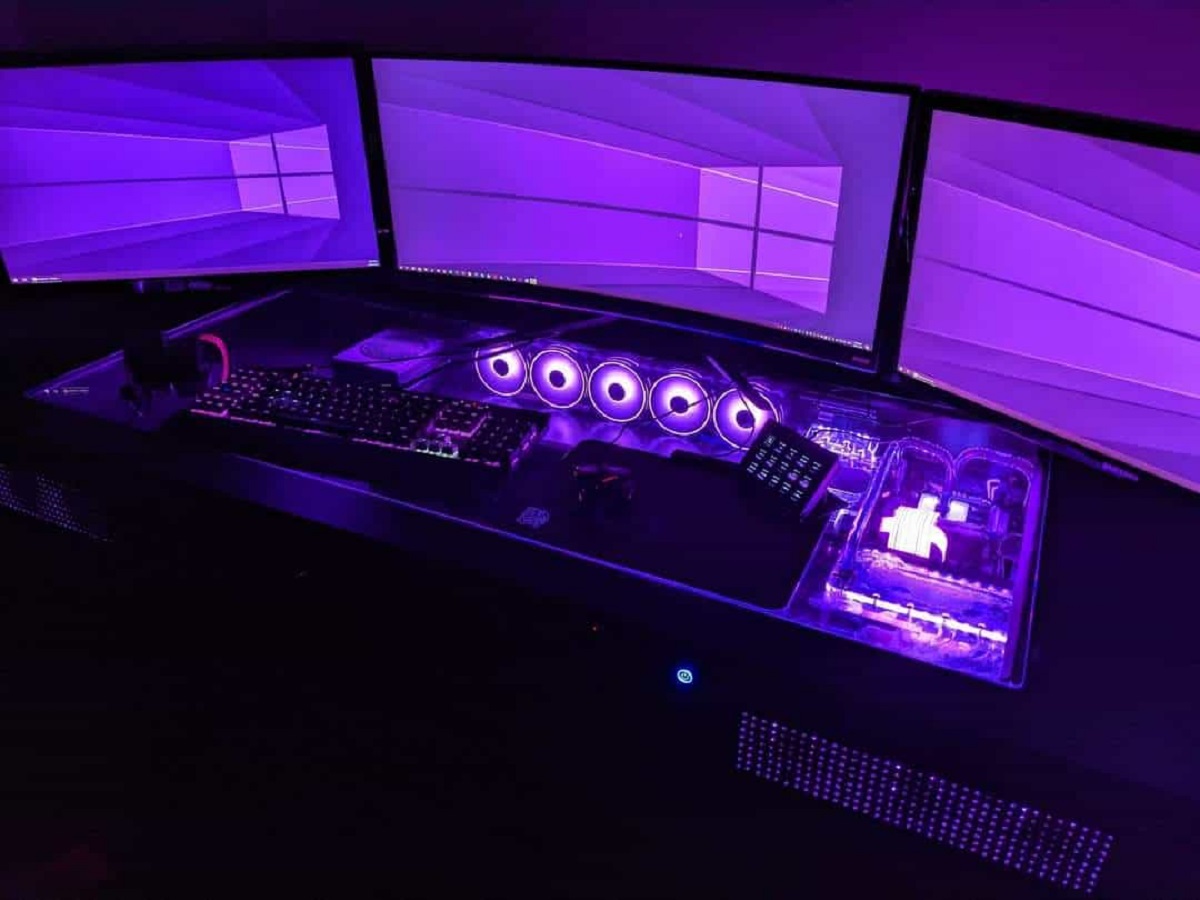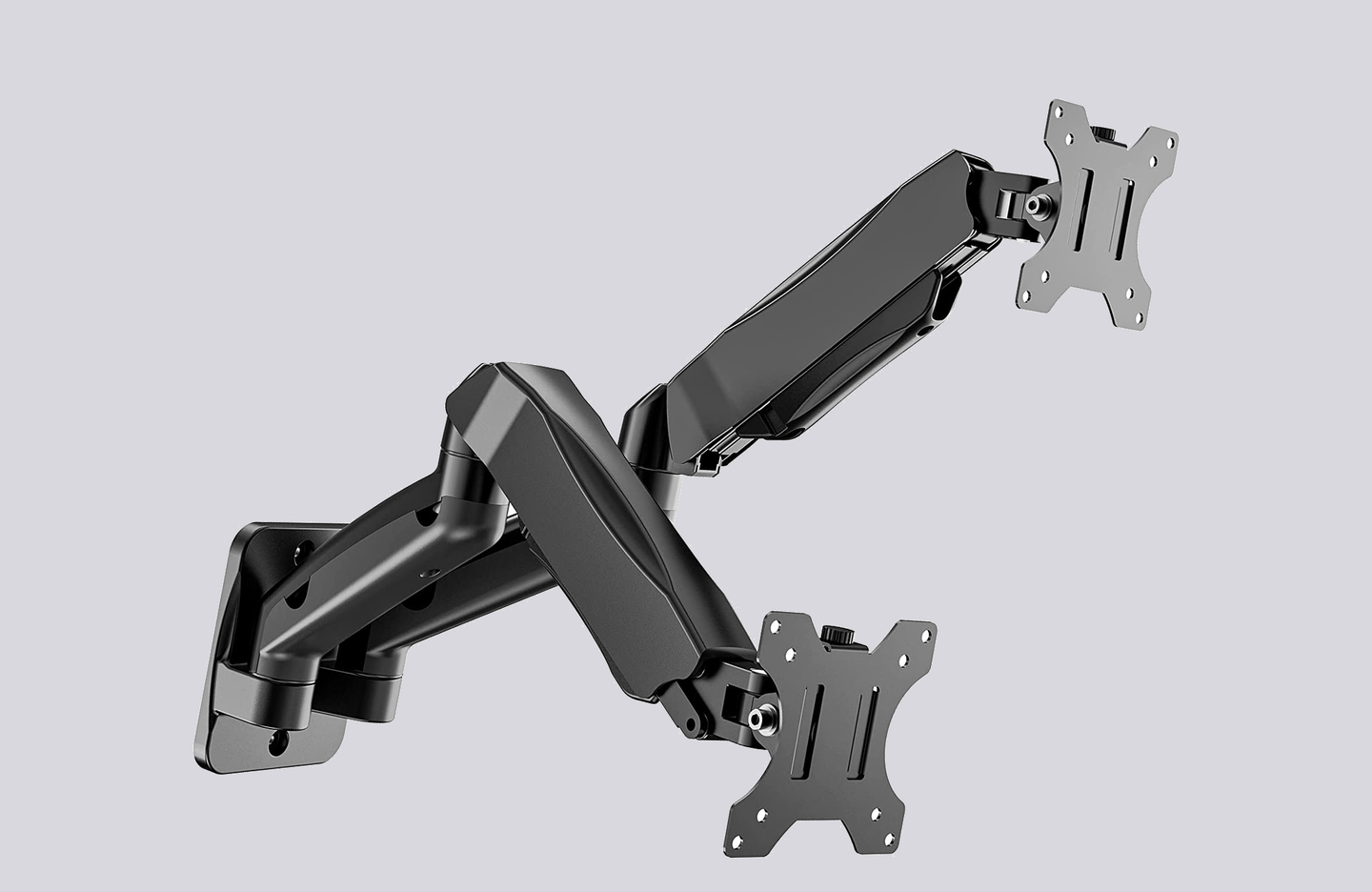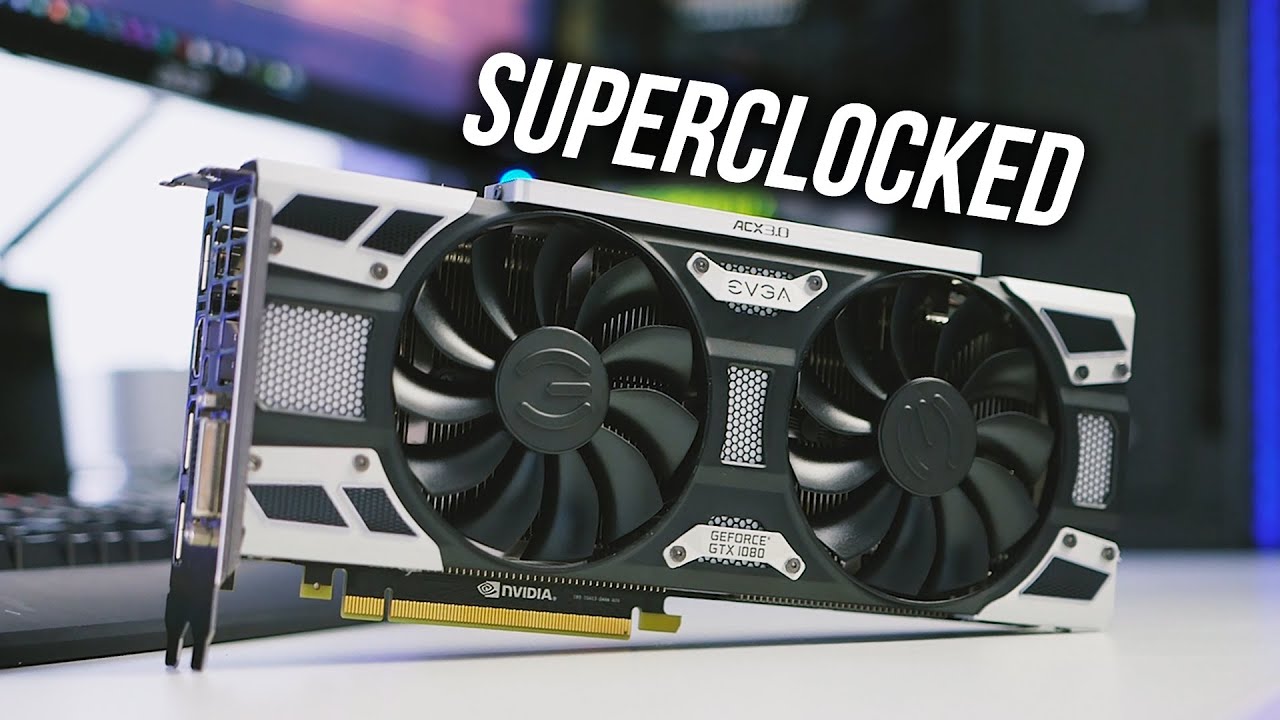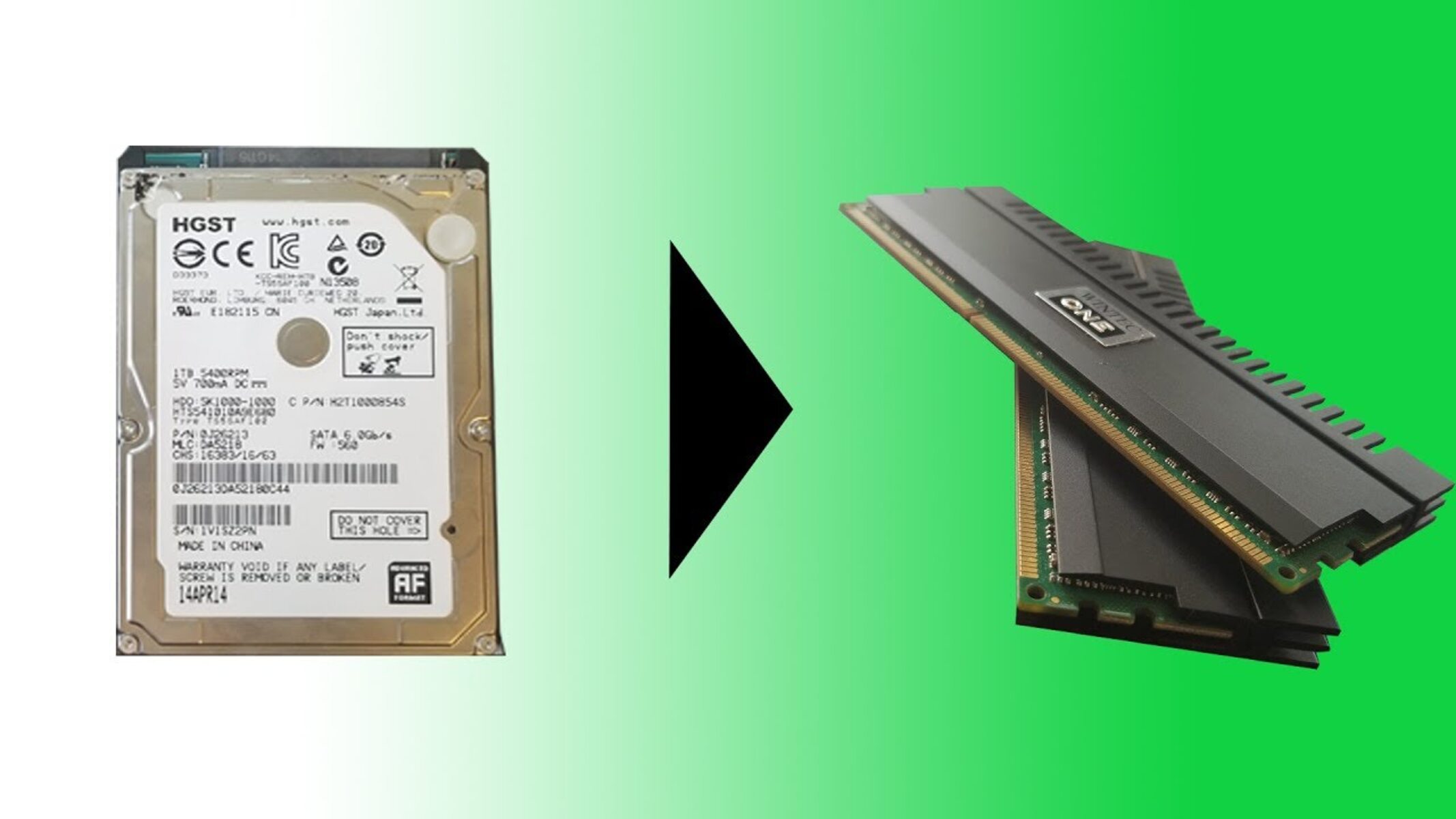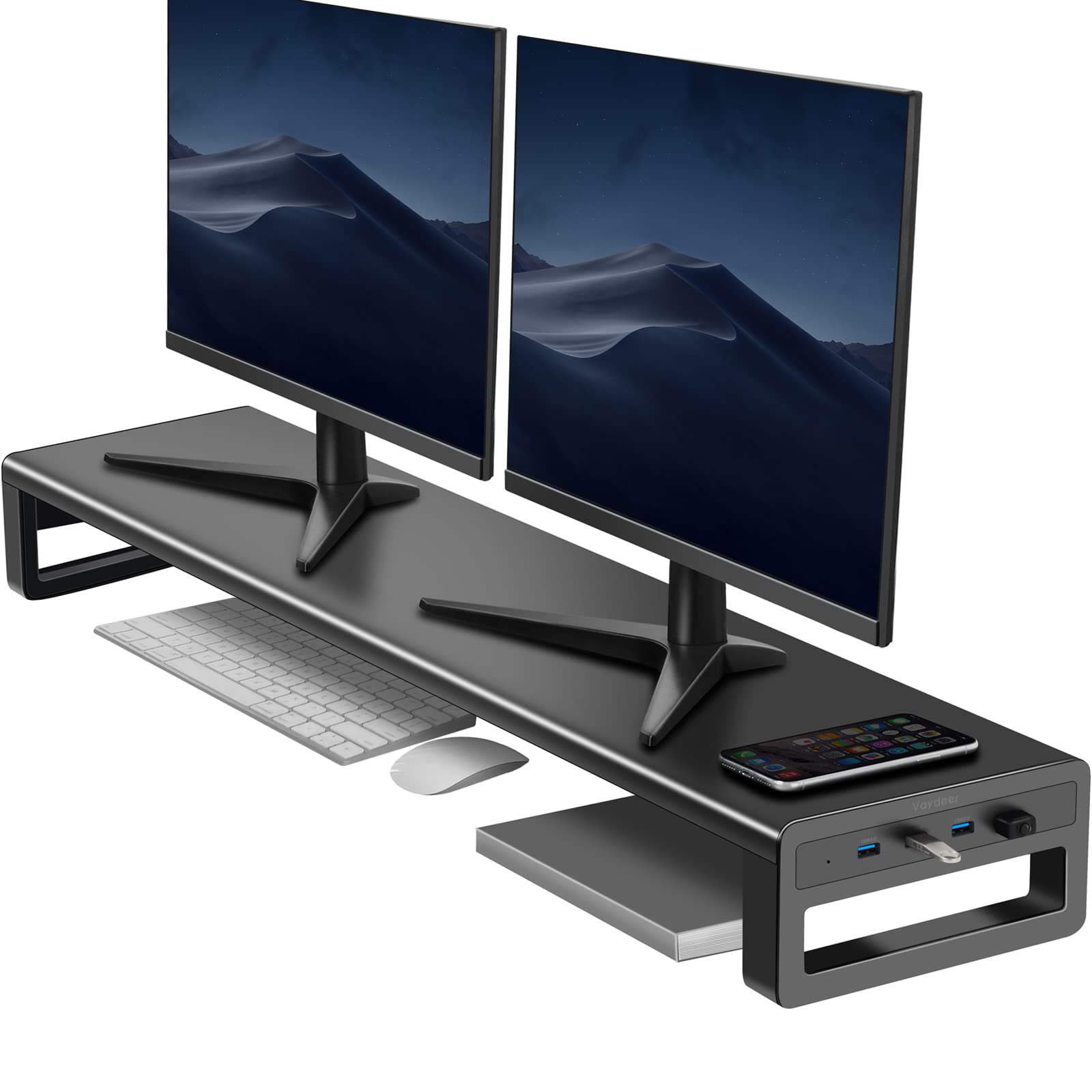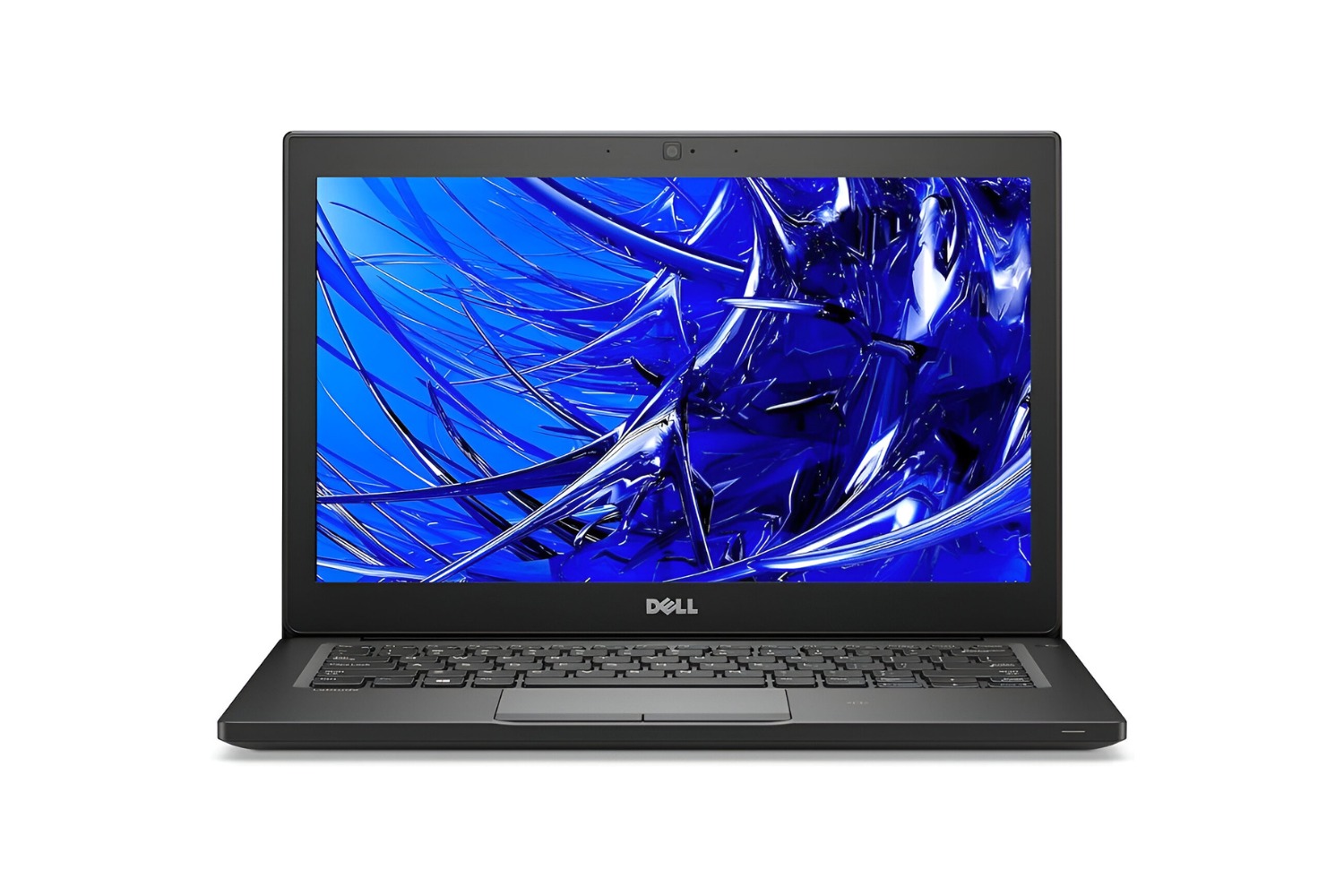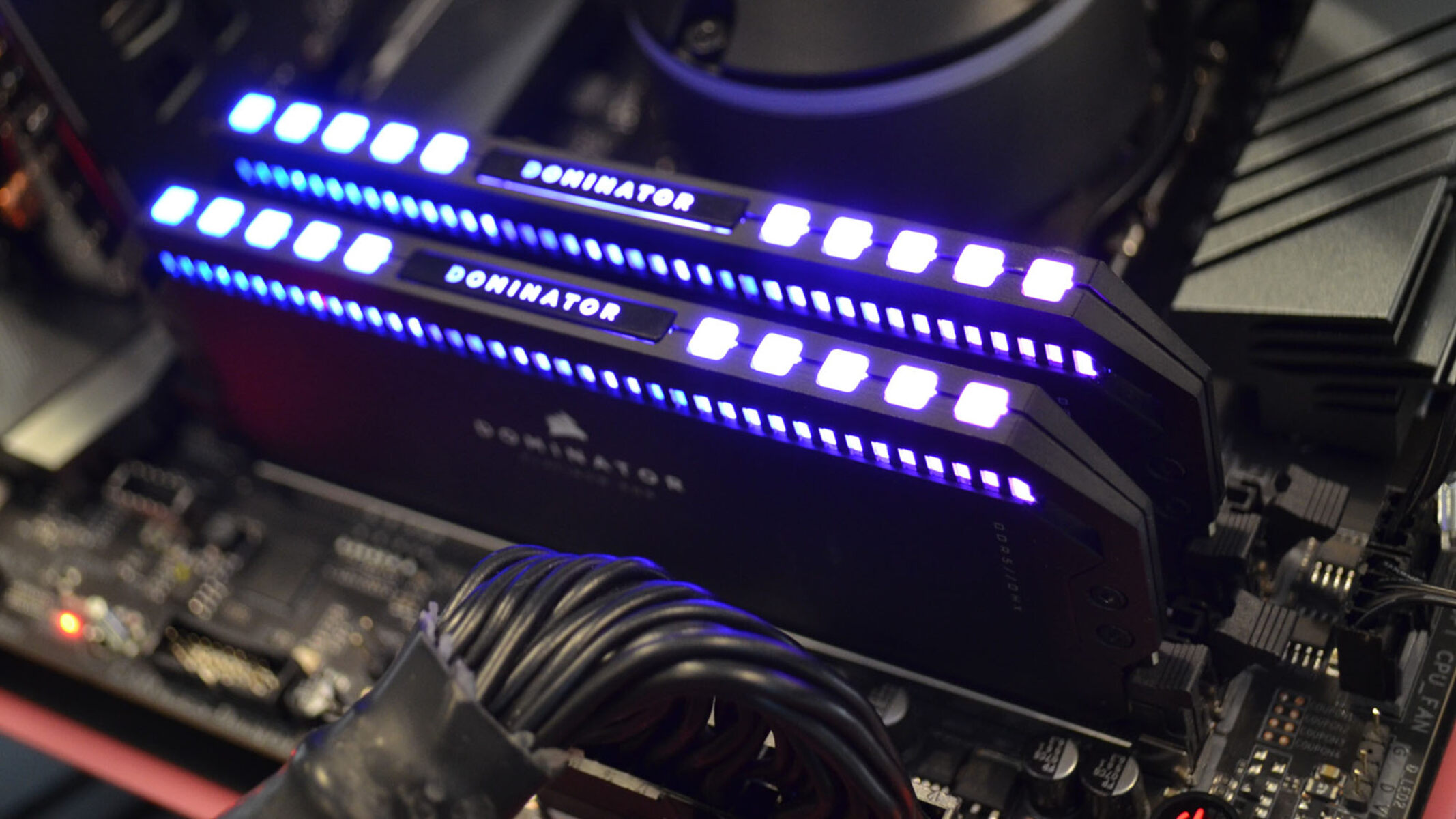Introduction
Welcome to our comprehensive guide on understanding the weight of computer monitors. If you have ever wondered how much your computer screen weighs or need to transport and handle a monitor safely, this article is for you. While the weight of a computer monitor may seem trivial, it is an essential factor to consider for various reasons.
Computer monitors have come a long way since their inception, and with advancements in technology, we now have a wide range of options to choose from. From sleek flat-screen displays to high-resolution curved monitors, each type has its own weight specifications.
In this article, we will delve into the factors that affect the weight of a computer monitor, explore the weight ranges of common monitor types, provide tips on finding the weight of your specific monitor model, explain why knowing the weight is important, and offer guidance on safely lifting and moving computer monitors.
Whether you are a professional who frequently deals with monitors or an individual looking to upgrade your home office setup, understanding the weight of computer monitors will help you make informed decisions and ensure the safety of your equipment.
Without further ado, let’s dive into the fascinating world of computer monitor weights and explore why they matter.
Factors that Affect the Weight of a Computer Monitor
Several factors contribute to the overall weight of a computer monitor. Understanding these factors will give you insight into why monitors of different sizes and types may vary in weight. Here are the primary factors that affect the weight of a computer monitor:
- Screen Size: One of the most significant factors influencing a monitor’s weight is its screen size. Generally, larger monitors with larger screens will weigh more than smaller ones. This is because larger screens require more materials to manufacture, including additional layers for the display panel and backlighting.
- Display Technology: The type of display technology used in a monitor also impacts its weight. The two most common types are liquid crystal display (LCD) and light-emitting diode (LED). LED monitors tend to be lighter than their LCD counterparts, as LED technology allows for slimmer and lighter panels.
- Build Quality: The construction and build quality of a monitor play a role in its overall weight. Monitors built with sturdier materials and components may weigh more but often offer better durability and longevity.
- Additional Features: Monitors may come with various additional features that can contribute to their weight. These features can include built-in speakers, USB ports, ergonomic stands, and adjustable height and tilt mechanisms. The presence of such features will increase the weight of the monitor.
- Connectivity Options: The number and type of connectivity ports available on a monitor can impact its weight. Monitors with more extensive connectivity options, such as multiple HDMI, DisplayPort, or USB-C ports, may weigh slightly more due to the additional circuitry required.
It’s important to note that while these factors provide a general understanding of what affects the weight of a computer monitor, manufacturers may have their own design choices and variations that can influence the weight of specific models.
Now that we know the factors that contribute to a monitor’s weight, let’s explore the weight ranges of common monitor types in the next section.
Common Types of Computer Monitors and their Weight Ranges
Computer monitors come in various types, each with its own specifications and weight ranges. Here are some of the most common types of computer monitors and their corresponding weight ranges:
- Standard LCD Monitors: Standard LCD monitors typically range from 15 to 30 inches in screen size. These monitors are lightweight and compact, making them ideal for small desk spaces or on-the-go setups. Their weight typically falls between 5 to 15 pounds (2.3 to 6.8 kilograms).
- LED Monitors: LED monitors utilize light-emitting diodes for backlighting and are known for their energy efficiency and slim design. LED monitors can range from 15 to 34 inches in screen size and typically weigh between 3 to 12 pounds (1.4 to 5.4 kilograms).
- Ultrawide Monitors: Ultrawide monitors offer a wider aspect ratio, providing a more immersive viewing experience. These monitors usually range from 29 to 49 inches in size and can weigh between 8 to 25 pounds (3.6 to 11.3 kilograms) due to their larger screen size.
- Gaming Monitors: Gaming monitors are designed to meet the demands of avid gamers, offering fast refresh rates and high-resolution displays. They typically range from 24 to 34 inches in size. The weight of gaming monitors can vary depending on their features, but they generally fall within the range of 10 to 20 pounds (4.5 to 9 kilograms).
- Curved Monitors: Curved monitors provide a more immersive viewing experience by wrapping the screen around the viewer’s field of vision. These monitors usually range from 27 to 49 inches and have a weight range of 10 to 30 pounds (4.5 to 13.6 kilograms).
It is essential to note that the weight ranges provided above are approximate and can vary depending on the specific make and model of the monitor. Before making any purchasing decisions, it is always best to check the manufacturer’s specifications for the exact weight of a particular monitor you are interested in.
Now that you have an understanding of the weight ranges for different types of computer monitors, let’s explore how you can find the weight of your specific monitor model in the next section.
How to Find the Weight of Your Computer Monitor
Finding the weight of your specific computer monitor is relatively straightforward. Here are a few methods you can use to determine the weight:
- Manufacturer’s Specifications: The most reliable source of information about a monitor’s weight is the manufacturer. Visit the manufacturer’s website or consult the product manual to find the specifications for your monitor model. Look for the section that provides details about the monitor’s dimensions and weight.
- Retailer’s Website: If you have already purchased the monitor or are considering buying it from a specific retailer, check their website for the product listing. Retailers often provide detailed information about the product, including its weight. Look for the “Specifications” or “Product Details” section on the monitor’s page.
- Online Reviews and Forums: Online reviews and forums can be a valuable source of information. Many technology enthusiasts and professionals share their experiences with specific monitor models, including details about the monitor’s weight. Look for reviews or forum threads that discuss the monitor you own or are interested in, and keep an eye out for any discussions regarding its weight.
- Community of Users: Engage with a community of users who have the same or similar monitor model. Join tech forums or social media groups that focus on monitors or computer hardware and ask fellow users about the weight of the monitor. Their firsthand experiences or knowledge can give you a reliable estimate.
By utilizing these methods, you should be able to determine the weight of your computer monitor accurately. However, keep in mind that weights may vary slightly due to manufacturing tolerances or optional features.
Now that you know how to find the weight of your specific monitor, let’s explore why knowing the weight is important in the next section.
Why Knowing the Weight of a Computer Monitor is Important
Understanding the weight of your computer monitor is crucial for several reasons. Here are some of the key reasons why knowing the weight of a computer monitor is important:
- Safe Handling and Installation: Computer monitors can be delicate and expensive pieces of equipment. Knowing the weight of your monitor allows you to handle it safely during installation or when moving it. This knowledge helps prevent accidental drops, damage, or injuries caused by incorrectly estimating the weight.
- Compatibility with Mounts and Stands: If you plan to mount your monitor on a wall or attach it to a monitor stand, knowing its weight is vital. Mounts and stands have weight limitations, and exceeding these limits can lead to instability or even damage to the monitor or the mounting equipment. By knowing the weight in advance, you can ensure compatibility and choose the appropriate mount or stand for your monitor.
- Transport and Mobility: If you need to transport your monitor or frequently move it between locations, knowing its weight is crucial for planning and logistics. You can ensure that you have the necessary support or assistance to safely move the monitor, especially if it is heavy or cumbersome.
- Workspace Setup and Ergonomics: Understanding the weight of your monitor is essential for creating a comfortable and ergonomic workspace. A monitor that is too heavy may require a sturdier desk or additional support, ensuring your workspace remains safe and efficient.
- Compatibility with Monitor Arms: Monitor arms are a popular accessory for flexibility and ergonomic positioning. Different monitor arms have weight limitations, and knowing the weight of your monitor is crucial for selecting the right arm that can support it securely.
By knowing the weight of your computer monitor, you can make informed decisions about its installation, transportation, and compatibility with various accessories. This knowledge helps you protect your investment, maintain a safe working environment, and optimize your overall user experience.
Now that we have explored the importance of knowing a monitor’s weight, let’s move on to the next section that provides tips for safely lifting and moving a computer monitor.
Tips for Safely Lifting and Moving a Computer Monitor
When it comes to lifting and moving a computer monitor, it’s important to exercise caution to avoid damage to the monitor or potential injury. Here are some helpful tips to ensure safe handling:
- Get Assistance: If the monitor is large or heavy, it’s best to have someone help you lift and carry it. Having an extra pair of hands will ensure that the weight is distributed evenly and reduce the risk of accidents.
- Use Proper Lifting Techniques: When lifting the monitor, bend your knees and lift with your legs rather than your back. Keep your back straight and maintain a firm grip on the monitor. Avoid twisting or jerking movements that could strain your muscles or cause the monitor to slip from your hands.
- Clear the Pathway: Ensure that there are no obstacles or tripping hazards in the area where you will be moving the monitor. Clear a path to prevent accidents or collisions with objects that could damage the monitor.
- Protect the Screen: Place a soft cloth or foam padding over the screen to protect it from scratches or impact during transportation. Secure the padding in place with elastic bands or tape to ensure it doesn’t slip off.
- Use Proper Packaging: If you need to transport the monitor, use the original packaging or a sturdy box that provides cushioning and protection. Make sure the monitor is secured in the packaging using foam inserts or bubble wrap to prevent it from moving around or getting damaged.
- Follow Manufacturer’s Guidelines: Refer to the manufacturer’s guidelines for specific instructions on lifting and moving the monitor. They may provide additional recommendations or precautions based on the design and weight of your specific monitor model.
- Avoid Extreme Temperatures: Try to prevent exposing the monitor to extreme temperature conditions during transportation. Rapid temperature changes can potentially damage the monitor’s components, so it’s best to avoid leaving it in hot vehicles or subjecting it to freezing temperatures.
- Take Breaks if Needed: If you need to move multiple monitors or if the task becomes physically strenuous, take breaks to rest and avoid overexertion. Disregarding your physical limits can increase the risk of accidents or strain injuries.
By following these tips, you can ensure the safe lifting and moving of your computer monitor, minimizing the risk of damage and injury.
Now that we have covered the tips for safely handling a monitor, let’s wrap up this guide in the final section.
Conclusion
Understanding the weight of a computer monitor is essential for various reasons. By knowing the weight, you can safely handle and transport the monitor, ensure compatibility with mounts and stands, and create an ergonomic workspace. Factors such as screen size, display technology, build quality, additional features, and connectivity options all contribute to a monitor’s weight.
When determining the weight of your specific monitor, refer to the manufacturer’s specifications or check the retailer’s website. Online reviews, forums, and communities can also provide valuable insights from users who have experience with the same monitor model.
To safely lift and move a computer monitor, it is important to get assistance if needed, use proper lifting techniques, clear the pathway, protect the screen with padding, and follow the manufacturer’s guidelines. Using proper packaging and avoiding exposure to extreme temperatures during transportation is also vital for maintaining the monitor’s integrity.
By considering the weight of your computer monitor, you can make informed decisions about handling, installation, mobility, and compatibility with accessories. This knowledge helps protect your investment, maintain a safe working environment, and optimize your overall user experience.
We hope this guide has provided you with valuable insights into the weight of computer monitors and the importance of understanding it. Feel free to refer back to this guide whenever you need to know the weight of a monitor and how to handle it safely.







